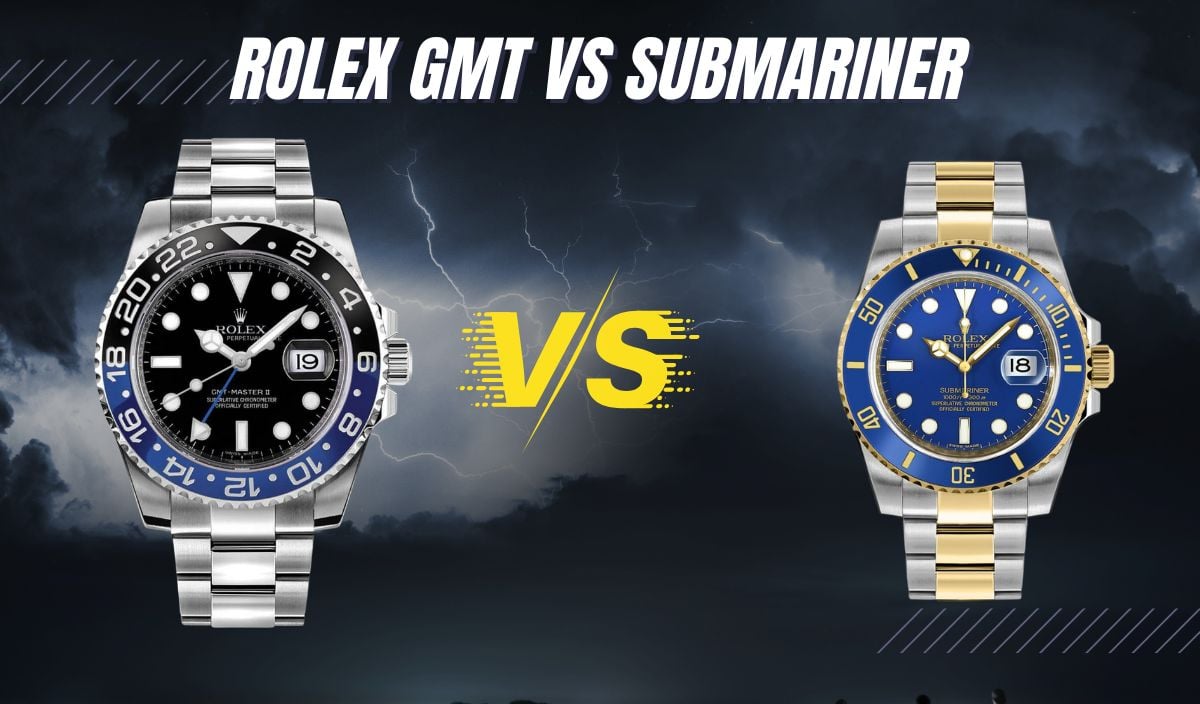
Rolex GMT vs Submariner: Battle of Two ICONIC Rolex Watches!
The GMT and Submariner are some of the most popular Rolexes ever – and indistinguishable to some. Despite being almost identical at first glance, they have many different features and fundamental designs for separate audiences. All of which we’ll get into and then finally determine which collection stands out better.
Before we head in, though, I’ll have you know that neither of these timepieces trumps the other. It’s literally going to be a review that helps you decide which one to get first because you won’t want to miss out on either the GMT or Submariner once you get to know them.
Let’s get into it.
Rolex GMT History
The Rolex GMT-Master II was introduced in 1955 and quickly adopted by Airline pilots. It’s the fruit of Rolex’s stellar marketing prowess and ad campaigns. One of the early ways Rolex pushed the GMT was by partnering with Pan American Airways.
In their 1969 catalog, Brian Trubshaw was to wear a GMT Master on his record-breaking flight as the first British pilot of Concorde, the fastest commercial airline ever, and also the first female British pilot to take a solo round-the-world flight in a single-engine plane, Sheila Scott.
It’s safe to say the Oyster Perpetual GMT-Master also debuted – and remains – a specialist watch for aviators, ship captains, navigators, world travelers, and pilots. It features a revolving 24-hour outer bezel and a GMT hour hand, which can tell the time for up to three timezones on the earth’s surface.”
The turning point for the GMT Master came in 1982 when a new movement had it renamed the GMT Master II. The new movement set local time without interfering with the GMT seconds or hours – a feature still seen in newer models as is.
A Tale of Two Times
Rolex released the GMT Master as a two-timezone watch for pilots. The original model featured a 24-hour bezel in blue and red, signifying nighttime and daylight, respectively. This trailblazing bezel was made from plexiglass and replaced in 1959 with anodized aluminum.
Many notable watches, like the Tudor Black Bay 58, still use the aluminum bezel today for a vintage appeal. But Rolex changed the GMT’s bezel to high-tech, scratch-resistant ceramic in 2005.
The dial is a classic. It debuted and remained the same 40mm black dial with Mercedes hands, multi-shaped markers, and date magnified by Cyclops lens. Safe to say, it didn’t take time until the larger market caught on to its design.
The dial carries the simple go-to Rolexas design of triangular, round, and baton, hour markers. It has four hands with eye-catching designs: the vintage “Mercedes” hour hand, the minute hand is a sword, the sweep second hand is a syringe, and the 24-hour hand is a red (varies based on model) arrowhead.
Like the Submariner, the GMT also has exceptional legibility, good enough that you can’t tell the difference between the two. This is more impressive when you know the Submariner is built to be readable in pitch darkness underwater.
Rolex GMT Master II watches are available in Oystersteel and Jubilee bracelets. It’s also the only collection with a polished center link that maximizes this timepiece’s dress appeal. It features a gridlock clasp system for safety and toolless adjustment to easily fit any wrist size.
Today’s Rolex GMT Master II has evolved into a three-timezone watch. Ultimately, the Rolex watch is built for pilots and frequent travelers who want a statement timepiece or have loved ones in another timezone.
Rolex Submariner History
Launched in 1953 and famously known for adorning the wrists of adventurers and icons, the Submariner is, interestingly, the first diver’s wristwatch with water resistance up to 100m (330 feet). Rolex pushed its excellence in engineering and R&D improving its resistance to 300 meters (1000 feet) in Submariners in 1979 for the date and ‘89 for the No Date.
The ref.6200 was the first Submariner to use the now “normal” Mercedes hour hands. It’s both a functional (keeps the hour hand visible when it overlaps with the minute hand) and iconic design.
Slow your horses down now, though; there’s no affiliation between Rolex and the German automobile manufacturer. It’s rather a nod to the Swiss watchmaker’s first ambassador, Mercedes Gleitze, swimming across the British Channel in the 20s.
Rolex Submariners also didn’t have their names boldly imprinted in earlier models. Rolex battled for patent rights until the 60s. Needless to say, Submariners have come a long way as the ultimate diving equipment they’ve become today.
Braving the Deep Seas in Style
Rolex Submariner is one of the most iconic diver’s wristwatches of all time. Its design has remained largely the same as it was seven decades ago.
As an underwater tool, the Submariner has a corrosion-resistant Cerachrom bezel with a 60-minute graduated scale. Like the GMT, it has knurled (jagged) edges for easy gripping with gloves on, but the Sub has a luminous capsule on the zero marker for legibility underwater.
The Submariner and GMT share the same face shape dial markers with triangle, baton, and stick hour markers. And a narrower minute sword hand, Mercedes hands, and syringe seconds hand.
The only glaring difference here is the exception of a 24-hour hand. Also, there are four lines of text on the Sub’s dial, while GMTs only have three. The smoking gun on the Sub is a text saying, “1000ft = 300m.”
It’s also available in Oystersteel, Rolesor, and 18-carat gold. Most, if not all, bust-down models are customized by jewelers. By the way, the entry-level stainless steel models use the 904L Oystersteel, which is in the same class of alloys used for equipment in the aerospace and chemical industries.
It’s subtle material differences like this that sets Rolex apart from the crowd. One glance at the finishing, and you’ll be blown away. The case back is polished along the sides, giving it a refreshing, reflective finish you’ll appreciate more in person.
Since 2020, Submariners Dates and No Dates use Rolex’s latest innovation, the Caliber 3235 and 3230, respectively. They are matched equally with the GMT Master II movements for power, accuracy, and durability.
Rolex GMT vs Submariner: Which One Should You Choose
Considering that this article isn’t based on a personal opinion but an “objective” review of the subtle differences between these two iconic models, I will make a side-by-side comparison of both watches using their classic features as a point of reference.
With this, you can decide which one suits your fancy and maybe even develop a soft spot for one of them before you walk into the store to try them out.
I’ll tell you upfront. No watch review or vlog can do justice to how the Rolex GMT or Submariner feels on the wrist. But only you can put a word to it or describe this feeling. But this review will do some justice to some of the world-class craftsmanship you’ll experience.
Model Options
You have two of the most iconic watch collections to pick from. Which one would you choose a model from? That’s as pretty hard to say. But it’s not impossible to objectively decide which collection has the best model options based on specifications.
First of all, the GMT Master II beats the Submariner by having a higher number of models in the collection – 12 to 8. But that’s not what I’ll base an argument for best model options on; if that were the case, Rolex’s Datejust would be a better watch.
However, going by design and engineering, the GMT may just be the winner. All the models are two-toned and stand out as more of a dress watch than an everyday model (even though it’ll absolutely fit that role).
On the other hand, if you love a simple and fashionable Rolex, the Submariner would do; it’s the more popular of both collections. But there’s a new wave of enthusiasts taking to the GMT for its portability and stylishness.
Functions
The Rolex GMT Master II and Submariner are simple timepieces with no super complications. Nonetheless, the GMT is slightly more complicated because of its dual time zone function. It combines all the Submariner functions, including center hour, instant date with rapid setting (for date models), and stop seconds with a 24-hour bezel and an independent GMT hand with a rapid setting.
But the Submariner deservedly has a better water resistance of 300 meters compared to 100 meters of the GMT. While Rolex markets the Submariner as 1mm larger than the GMT, the difference on the face of the watch is way smaller – about 1/4th. It’s closer to 40.6mm than 41mm.
Build Quality
When you bring Rolex into a conversation, build quality isn’t a question. It’s a fact that all Rolex watches are almost entirely handmade by the most skilled craftsmen and airtight quality control system.
It takes a year to make one Rolex watch, so judging which one has a better build quality can be far-fetched, even delusional because they’re the same. Instead, I’ll do you one better and share how the workmanship on the GMT Master II and Submariner stand out.
First up is the dial. They both carry an Oystersteel case with a shiny finish on the dial and bezel, regardless of color variations. Some people don’t like this because it makes what’s meant to be a “professional tool watch” appear more “blingy” than “toolsy.” But you know it’s a fake Rolex without some small attention to detail.
There are “Rolex” inscriptions along the inside walls of the case, which I find attractive. Maybe it’s because my Fossil doesn’t have anywhere near his level of detail.
Moving on, I’ll bring your attention to a discrepancy that may or may not be important. The Submariner is only slightly bigger than the GMT. For instance, Rolex lists the case diameter as 41mm, but as I’ve pointed out earlier, it’s closer to 40.6mm, while the GMT is 40mm.
Needless to say, the Submariner has a pronounced lug-to-lug that would be attractive if you like square or bold watches. But I love the more rounded and discrete face of Rolex GMTs.
Movement
Both watches house truly exceptional movements that are kings in their own right. But technically, the GMT Master collection is more outstanding when you consider their second timezone function. Regardless, I’ll compare the Rolex GMT Master and Submariner Date’s movement for context.
The most recent GMT Master watches use the Caliber 3285, while current Submariner Date models, like the ref. 126610LN, carry Caliber 3235 movements. They both have 70 hours of power reserve, 31 jewels, 28800 vph frequency, and are chronometer certified (COSC). More so, they are the same size and accurate to +2/-2 seconds a day. The GMT’s only edge is the fact that you can read the time for up to 3 time zones.
Price & Availability
Clearly, you can’t just walk into a Rolex store to get a GMT or Submariner or buy one instantly online. All of these are true, to some extent, except the latter. And then there are other factors, such as desirability and rarity. For instance, it’s easier to get a black dial Submariner than it is to find a green “Hulk” Submariner.
The same idea goes for the Rolex GMT, except they’re even tougher to source if your dealer’s out of stock. Overall, it takes an average of 6-12 months from your trusted retailer to find a GMT or Submariner. But it takes up to 3 years if you ask an authorized dealer with whom you don’t have a good relationship or spending history.
All in all, the Submariner is relatively easier to buy because of its popularity and lower price than the GMT Master II. But they both have a good resale market. And it’s easy to find a trusted dealer online rather than bank on an authorized dealer for months or years. The only gripe is you may be restricted to the available models if you want a quick sale.
Value Retention & Investment
If you’ve been in the game long enough, you’ll know any Rolex watch, down to the cheapest DateJust, is worth the investment. And we can proudly say the same of any Rolex GMT Master II or Rolex Submariner model.
The Rolex Hulk, for example, was first introduced in 2010 and cost only about $9,000. It was discontinued in 2020 because of the changes to the Submariner collection – notably a bigger case. It was replaced by the Rolex Starbucks with the standard 41mm oyster case.
Anyhow, it currently costs anywhere from $20,000 to $50,000 for a pre-owned Submariner 1160010LV “Hulk” in mint condition. Likewise, the Rolex GMT 16700 in stainless steel, discontinued in 1999, still costs around $13,000 as of the time of writing this. If that’s not impeccable value retention and worthy investment, I don’t know what is.
However, limited availability plays a key role here, so I’d analyze recent models starting with the GMT Master II Pepsi Oystersteel in the jubilee bracelet. It officially costs only $10,900 from an authorized dealer but a mint-condition piece can easily sell for over $20,000 in the secondary resale market.
That’s over 100% return on investment for a GMT model watch that’s still in production. Overall, both the GMT Master and Submariner are valuable investment timepieces. You can expect 100% value retention for either of them in mint condition even a decade after purchase.
Notable Rolex GMT & Submariner Models
I know I mentioned how the Rolex GMT knocks the Submariner out of the pack when it comes to model options. Let’s take a deeper look into some of these GMT models and, of course, some iconic Submariners the watch enthusiasts can’t get enough of.
Rolex GMT-Master II “Pepsi” ref. 126710BLRO
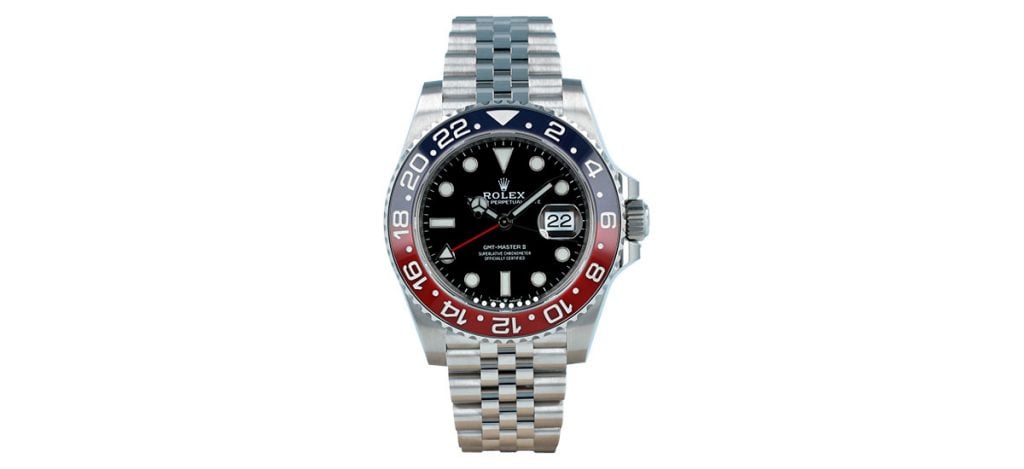
The GMT Master II “Pepsi” is one of the most iconic watches ever made. From its popularity among notable users to millions of knockoffs, it’s a must-have (the real deal, of course) for any serious watch collector.
Its moniker is a nod to its blue and red ceramic bezel, which resembles the official logo of the multinational soda brand. This color variation is one of the most common in the GMT Master II collection for its unmatched beauty and charm. Despite this, it’s not any cheaper or easier to get than other models.
Rolex GMT-Master II “Batman” ref. 126710BLNR
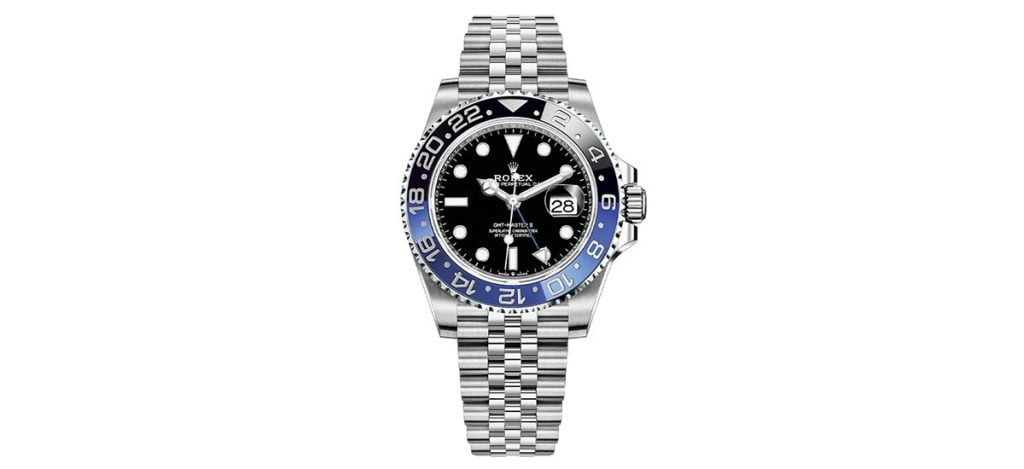
A “Batman” is simply a GMT Master II with a black and blue bezel. It’s a sought-after Rolex GMT with a black dial and Jubilee or Oyster bracelet with polished center links. The dial and bezel take on a glossy finish like all Rolex sports watches.
It also uses the same in-house Caliber 3285 with an independently adjustable 24-hour hand like the Pepsi, Root Beer, Meteorite, or any GMT Master II.
Rolex GMT-Master II “Root Beer” ref. 126711CHN
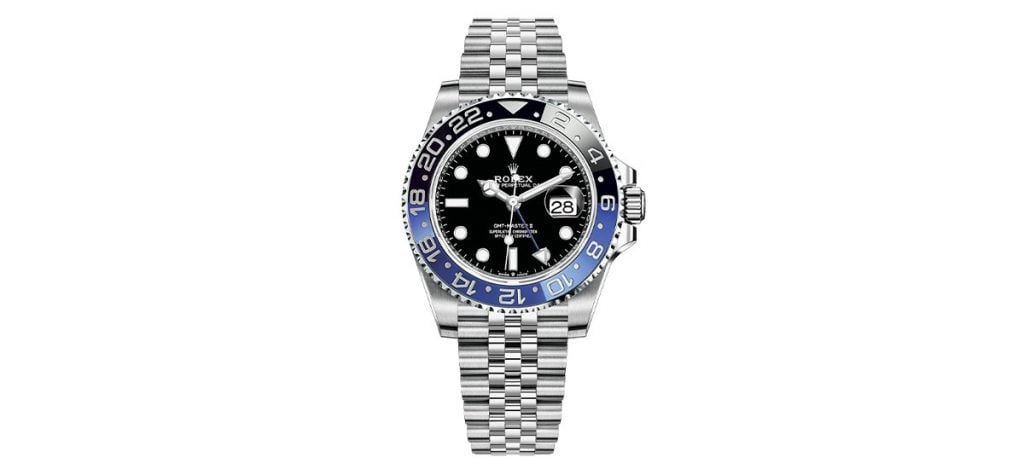
The Root Beer GMT Master II is a step away from the usual Oystersteel models. It gets its name from the dark orange color of its Everose gold adornment. This precious stone embellishment makes it over $6,000 more expensive than a stainless steel version, with an official price of $16,500.
Here’s why. While not a full gold bust down, it’s a sublime combination of Everose gold and Oystersteel across notable parts of the timepiece. The two-color (black and red) bezel is gold plated around the knurled edges, and the 24-hour graduations are molded from Everose gold.
Further, the multi-shaped hour markers and hands are also plated with the root-beer colored Everose gold down to the crown. And the normally polished center links are replaced with Everose gold polish to give it a classic Rolex two-tone look.
Rolex GMT-Master II “Meteorite” ref. 126719BLRO
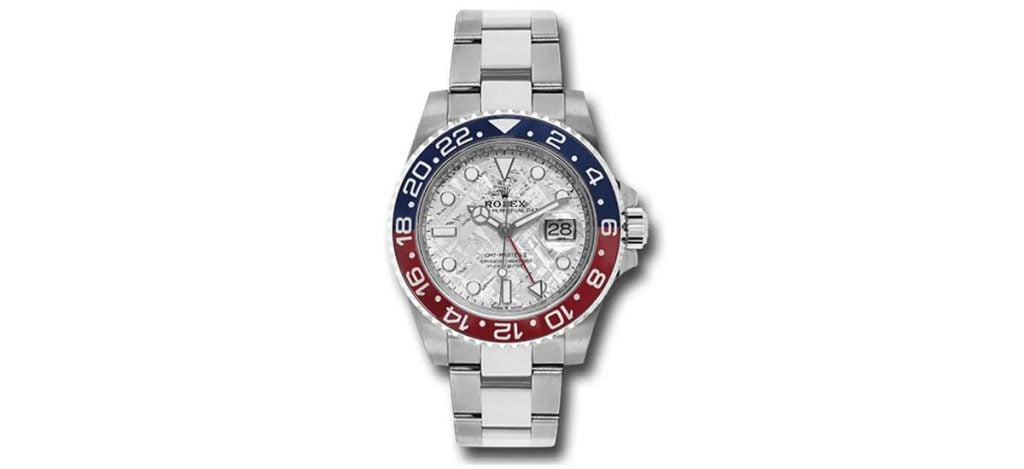
Here’s another GMT Master with a dazzling case and dial. The Meteorite is the closest thing to a bust down in the GMT collection, and the most precious ornament isn’t your typical precious stone. It features an 18-karat white gold case and a diamond-like “meteorite” dial.
Rolex drew inspiration for the idea from the metallic patterns of the core of an asteroid – space rock – as it cools down upon entry into Earth. And they made the dial out of an actual piece of meteorite – the Gibeon meteorite.
This is the only model of the GMT Master II with this dial. And you bet it’s the most expensive, with an official retail price point of $42,900. The Meteorite is understandably more precious on the pre-owned market costing anywhere from $35,000 to $300,000.
Explore the
Biggest Pre-Owned Collection of Luxury Watches
There’s a slightly cheaper ($40,600) variation with a Midnight Blue dial instead, but the same white gold case. It debuted at an average of $33,000 in 2019 and now costs $40,600.
Rolex Submariner Date ref. 126610LN
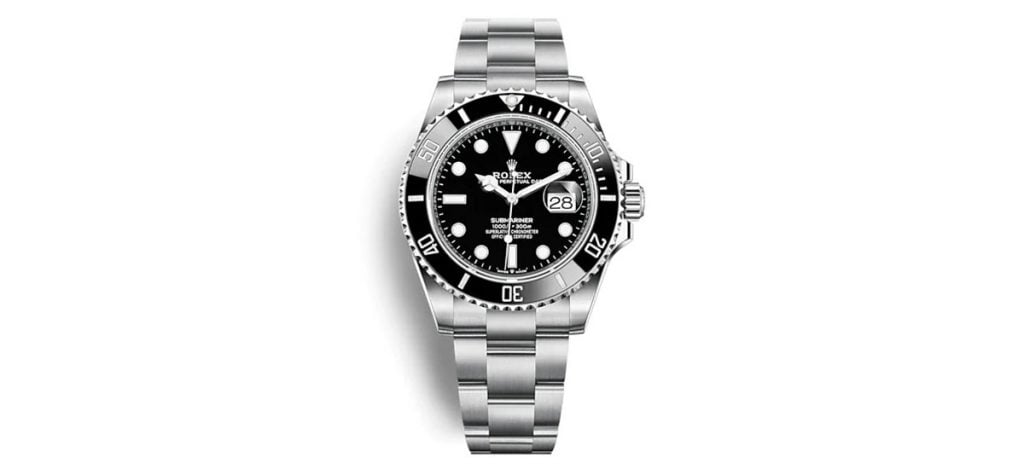
This is the go-to Submariner for collectors and icons who want a piece of the classic Diver watch. It’s in an Oystersteel case with a black-on-black bezel and dial combo giving it a simple yet bold and fashionable look, especially with its gloss finish.
The 126610LN uses the Rolex Caliber 3235 movement and Triplock triple waterproof screw-down crown for up to 300 meters of water resistance. I don’t see many Submariner owners diving in one, but it’s good to know that it’s a fully-capable underwater tool. As of 2020, this Rolex Submariner cost only $8,250 but is now worth $10,250 at retail price.
Rolex Submariner No Date ref. 124060
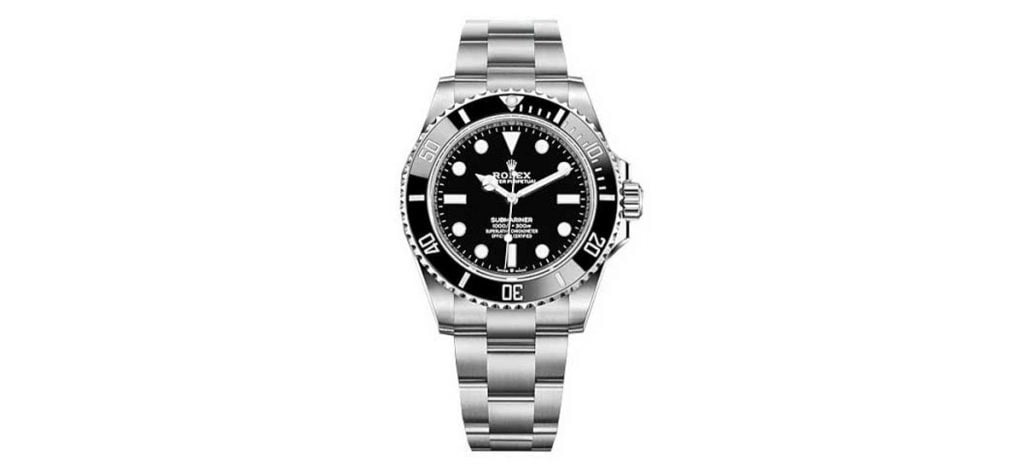
As the name of the dateless Submarine implies, it’s a typical all-black Submariner without a date window on the dial. But it’s just as beautiful and valuable as the Date option. The only technical difference is it uses a different movement: caliber 3230.
The No Date has the same build and resale value. The official retail price rose from $7,700 in 2020, during its launch, to $9,100 as of writing (2023).
Rolex Submariner “Starbucks” ref. 126610LV
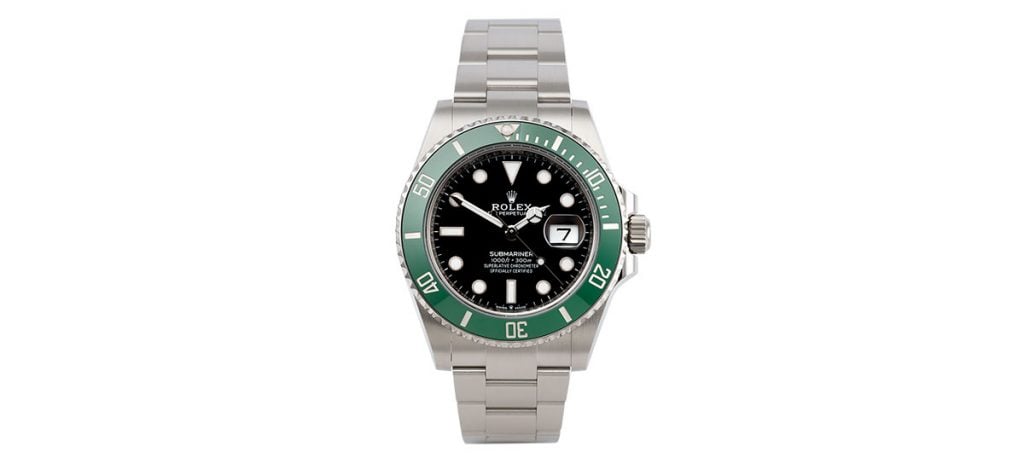
This is an upgrade to the OG Submariner Kermit, which debuted in 2003. Aside from a longer case than the Kermit, the 2020 Submariner Starbucks houses a more efficient in-house Caliber 3235.
It’s a two-colored Submariner in Oystersteel case, a green ceramic bezel, and a black dial.
While the Starbucks is bigger and better, the Kermit is a great investment due to limited supply (discontinued) and a steady increase from collectors on never-ending waitlists. The most precious Kermit collectible is the 16610LV Mark 1, a 50th-anniversary model costing over $40,000.
The Submariner Starbucks is still in production and is also difficult to get. It currently has around seventy percent return on investment on the second-hand market at the official $10,800 retail price.
Rolex Submariner “Bluesy” ref. 126613LB
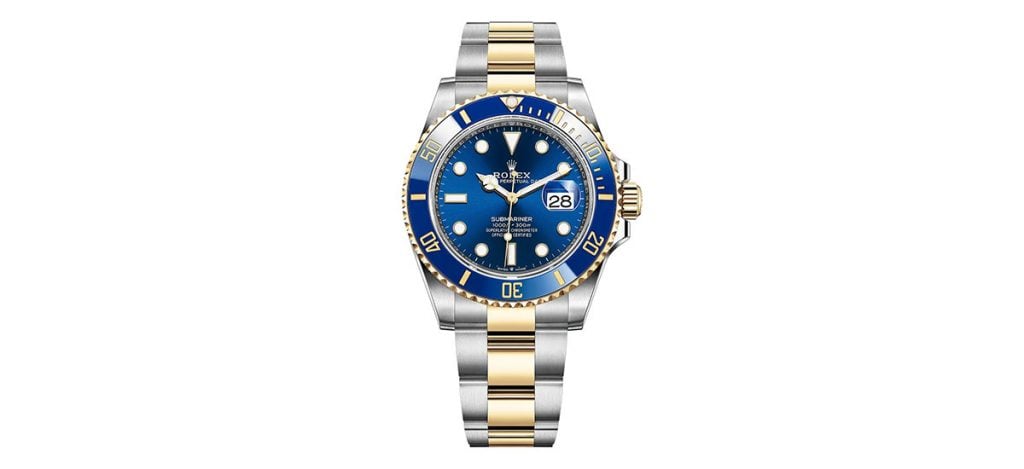
This is arguably the most beautiful Sub ever made. It’s essentially a two-tone Rolex Submariner with a dazzling blue dial and bezel. The dial is polished with a sunburst finish, yellow gold markers, and hands that are eye candy every moment you look down at the timepiece.
The yellow gold adornment also trickles around the edges and graduations of the blue ceramic bezel. It maintains the 41mm case of modern-day Submariners but is enhanced with yellow gold polish down the center and center links.
It also uses the latest Rolex Caliber 3235 movement with 70 hours of power reserve. Since its release in 2020 at a starting retail price of $13,600 it has leaped to $15,600 about three years later. So it’s safe to say price rises year by year.
Final Thoughts
When you try any of these watches out, picking one over the other is tough. And it almost always becomes a matter of which one you should buy first. Most time boiling down to budget, availability, or if a second time zone matters to you as much as diving depth. But, when it comes to design and build excellence, it’s a tie between the Rolex Submariner and Rolex GMT Master II.
Generally, I love functional and dressy timepieces that suit my style. I particularly love small-faced but complicated watches, and the GMT Master II perfectly fits that category for me.
It has a 40mm case and partially polished center link bracelet compared to the stocky 41mm of the Submariner. And the second timezone function seals the deal. I love how I can adjust my subconscious to the time of a loved one overseas as I pass the day.
How you pick a GMT Master II or Submariner is your choice. They have the same attention to detail and world-class Rolex workmanship that makes a statement and are equally “hot” investment purchases promising a tremendous resale value.
About Exquisite Timepieces
Established in 1998, Exquisite Timepieces is your one-stop shop for all things luxury watches! We are an authorized dealer for 60+ luxury watch brands including Omega, Hublot, Seiko, & Longines! We are proud to showcase one of the world’s largest pre-owned watch collections, including renowned brands like Rolex and Patek Philippe. Check out our brand new watch arrivals here and popular pre-owned listings here.



















